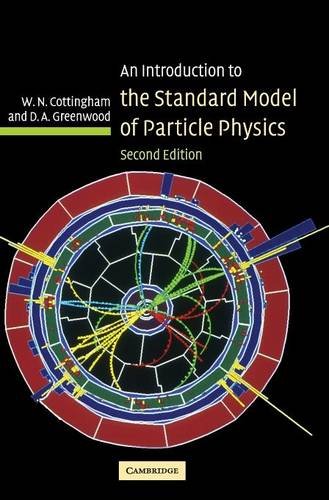An Introduction to the Standard Model of Particle Physics pdf free
Par nelson sherry le samedi, juin 18 2016, 02:27 - Lien permanent
An Introduction to the Standard Model of Particle Physics by D. A. Greenwood, W. N. Cottingham


An Introduction to the Standard Model of Particle Physics D. A. Greenwood, W. N. Cottingham ebook
Publisher: Cambridge University Press
Page: 294
ISBN: 0521852498, 9780521852494
Format: pdf
For an introduction to the Higgs boson, click here, here, or here (This last one is pretty good). Here A, C and D are heavy new-physics particles and j stands for a quark jet. �The current theoretical framework that describes elementary particles and their forces, known as the Standard Model, is based on experiments that started in 1897 with the discovery of the electron. The Standard Model has been fantastically successful, in that it is capable of predicting how particles will behave to very high accuracy. But the label “God Particle,” attached to the poor unsuspecting Higgs boson by Leon Lederman and Dick Teresi, continues to wreak havoc on physicists' attempts to clearly explain what is going on. But this was a blessing in disguise, since it led Higgs to add a paragraph introducing the now-famous Higgs particle. For structure group G = B U ( 1 ) the circle 2-group this yields the Kalb-Ramond .. Obviously, the Higgs boson's mass is less than infinite. So let's talk mass and why this is still a very good thing for particle physics. The authors try to motivate and introduce some basic concepts of category theory for an audience familiar with standard physics and in particular with quantum mechanics. 2008, Nambu receives half of the Nobel Prize for introducing the concept of spontaneous symmetry breaking into particle physics, which led, for example, to the explanation of why some particles have mass and others have not (Higgs mechanism). The Standard Model of Particle Physics (SM) is the theory that describes, well, everything with the exception of gravity (Yes, this is admittedly a pretty big exception). In 1964, Higgs wrote two papers, each just two pages long, on what is now known as The Higgs boson is the last undiscovered particle predicted by the Standard Model, a beautiful mathematical framework physicists use to describe the smallest bits of matter and how they interact. Specifically for G a discrete quotient of SU ( 3 ) × SU ( 2 ) × U ( 1 ) this is the gauge-field part of the standard model of particle physics.